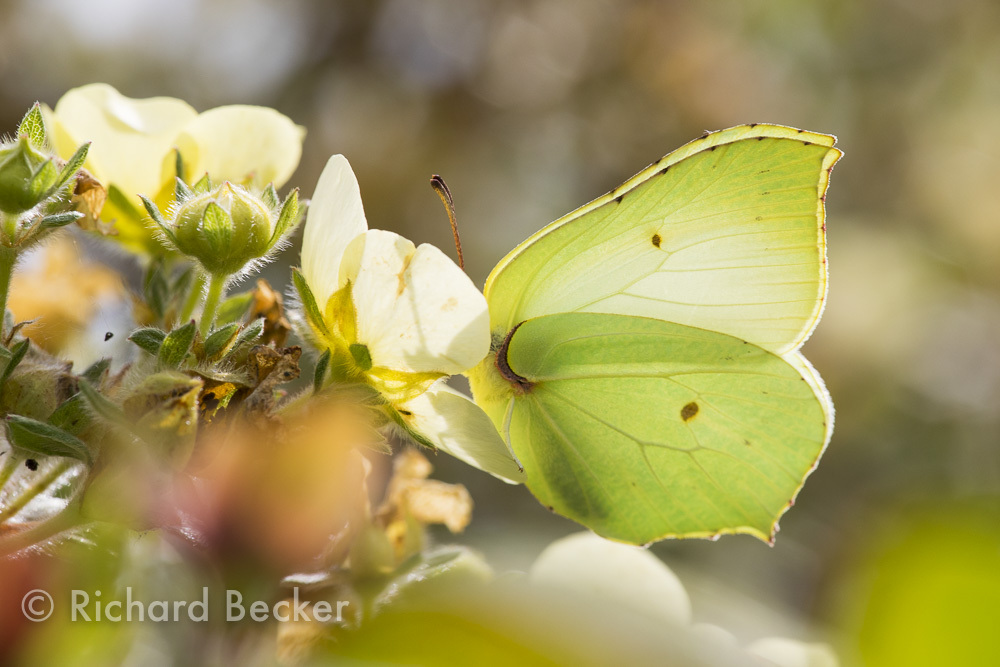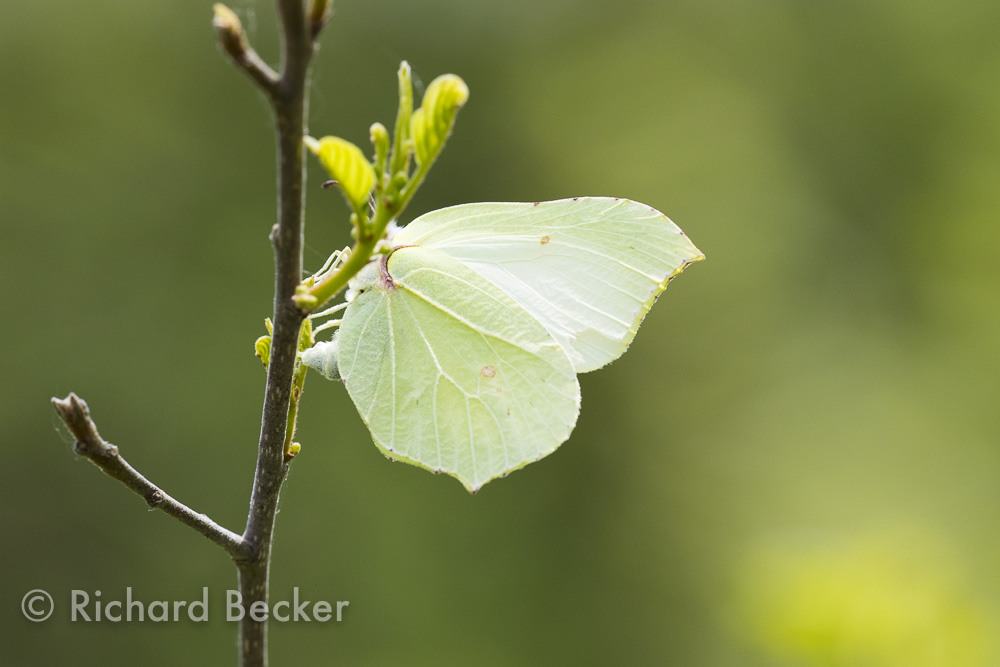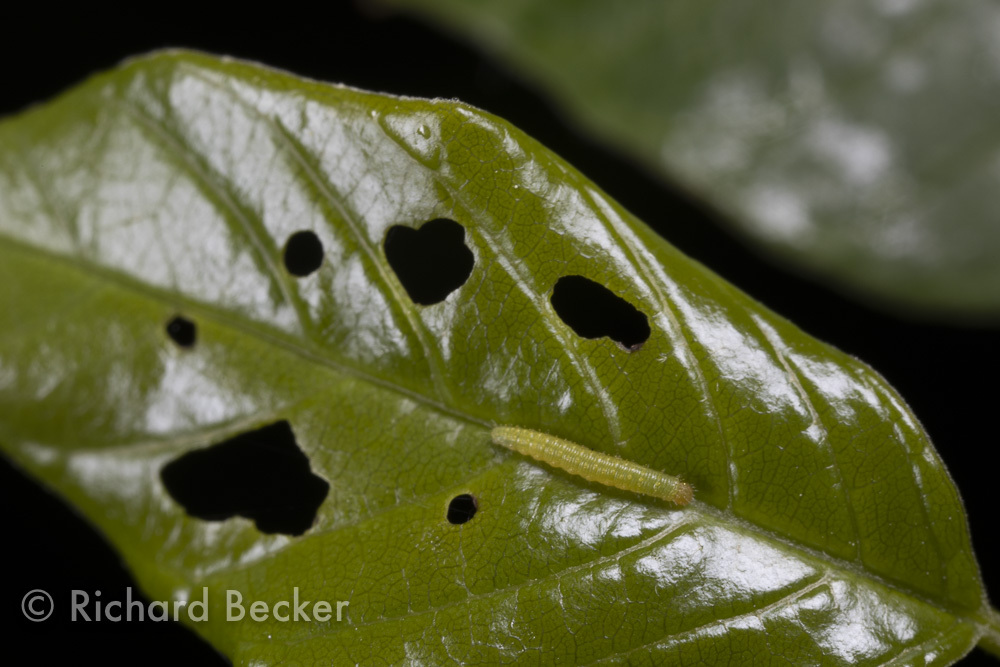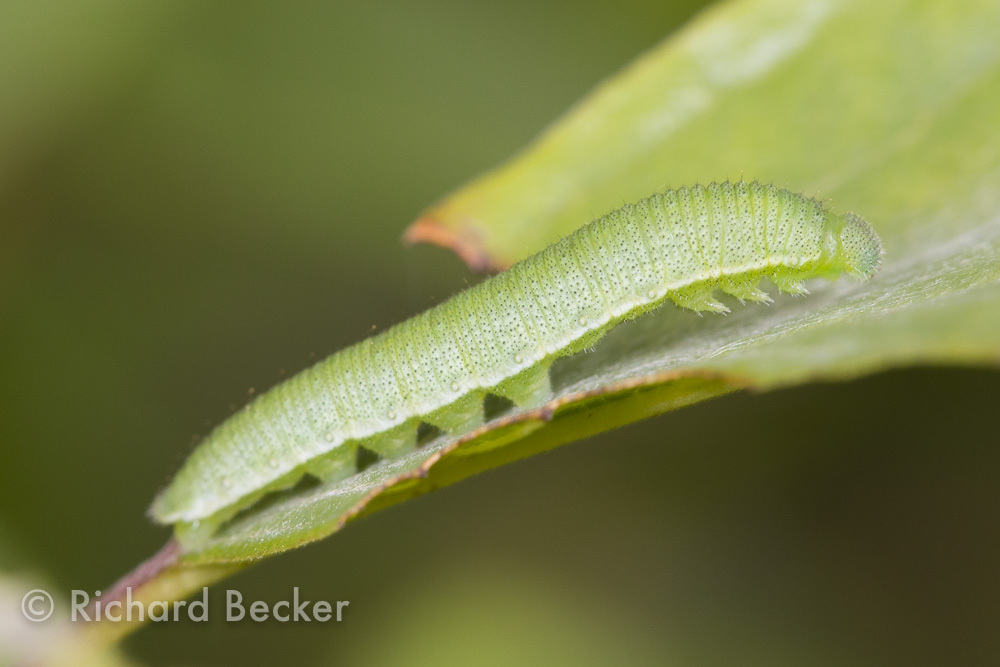04 Nov 2021
Gonepteryx rhamni, the Brimstone butterfly is an iconic species, possibly the original 'butter-coloured fly', and often the first, or at least the most obvious species to appear in Spring. The males especially wander huge distances in search of a mate and are easily recognised even at a distance or when passing them from a car for instance.

However here at 250m altitude in the Welsh hills the species is a rare visitor from the lowlands of the English border, in our first 18 years or so we had seen perhaps half a dozen individuals on the farm, all males and in most years none at all.
In an optimistic mood we planted a number of alder buckthorn bushes in the winter of 2003/4. Buckthorn is the caterpillar foodplant of the Brimstone and is an often scarce or at least sparsely distributed shrub, it does grow locally but at even higher altitudes than we are at, and is also rapidly destroyed by the uncontrolled sheep grazing typical of the Welsh hills.
We then waited, and waited, the buckthorns grew well and we saw the occasional male Brimstone but nothing appeared to feed on the leaves, though the flowers are popular with bees and the berries eaten by birds. We waited more, then the last 3 years we saw a Brimstone each year and finally in the spring of 2021 a female appeared. In the garden at first but was soon heading to one of the buckthorn bushes. Over the next couple of days this female (or maybe several) was seen regularly around several of the bushes and was clearly egg-laying. A scan of the leaves revealed a large number of eggs which hatched into caterpillars, and then in August adults of a new generation emerged.

I never managed any really satisfactory photos of the adults, but hopefully they will return in the Spring after hibernation for me to have another try, after over 20 years of waiting a few months doesn't seem too long.


One thing about Brimstone is that their early stages are easy to find provided that buckthorn bushes can be found. If present eggs and larvae are usually obvious and even if they have pupated the feeding signs are distinctive and remain so until the Autumn, showing that the species has been there.